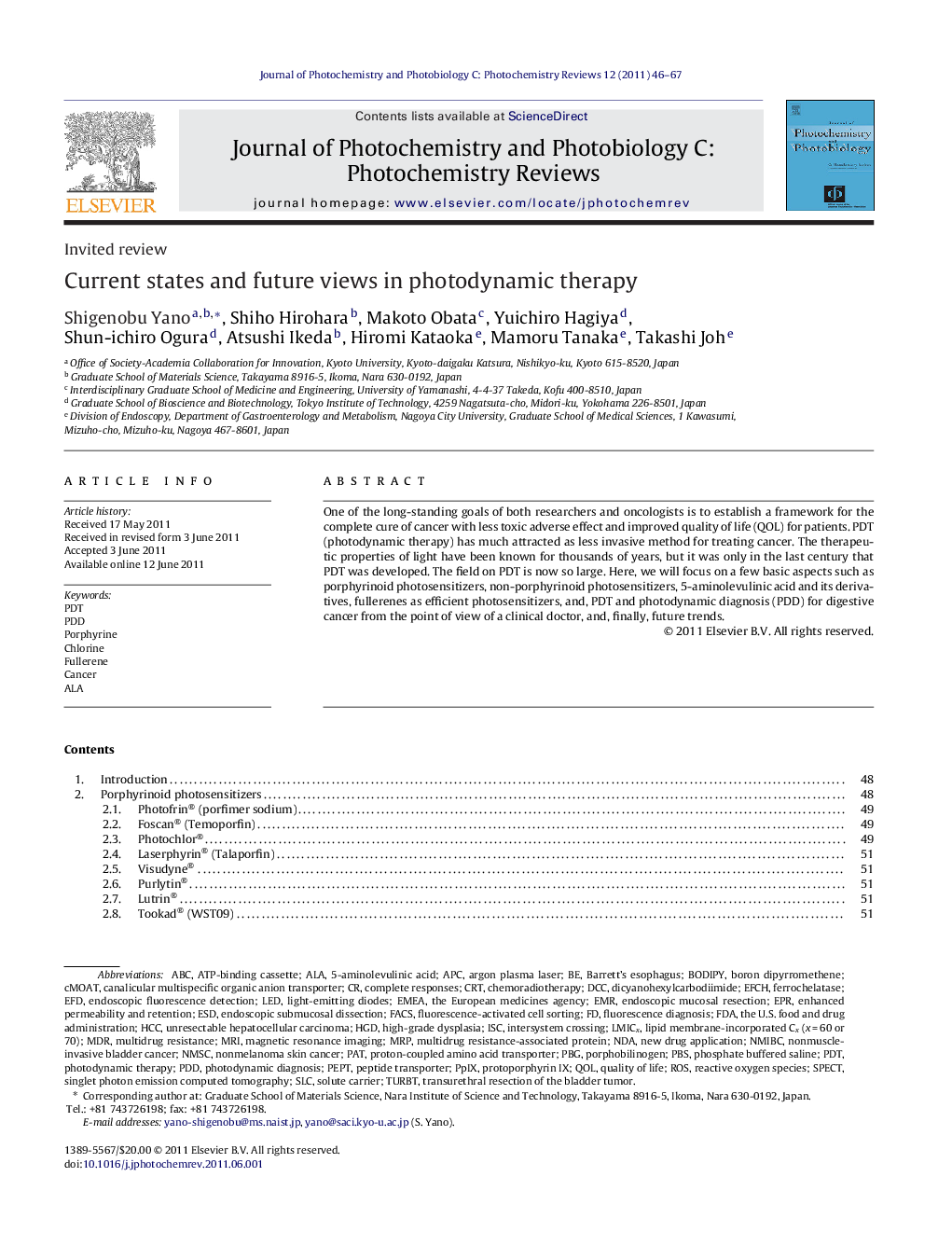| Article ID | Journal | Published Year | Pages | File Type |
|---|---|---|---|---|
| 31347 | Journal of Photochemistry and Photobiology C: Photochemistry Reviews | 2011 | 22 Pages |
One of the long-standing goals of both researchers and oncologists is to establish a framework for the complete cure of cancer with less toxic adverse effect and improved quality of life (QOL) for patients. PDT (photodynamic therapy) has much attracted as less invasive method for treating cancer. The therapeutic properties of light have been known for thousands of years, but it was only in the last century that PDT was developed. The field on PDT is now so large. Here, we will focus on a few basic aspects such as porphyrinoid photosensitizers, non-porphyrinoid photosensitizers, 5-aminolevulinic acid and its derivatives, fullerenes as efficient photosensitizers, and, PDT and photodynamic diagnosis (PDD) for digestive cancer from the point of view of a clinical doctor, and, finally, future trends.
► Photodynamic therapy (PDT) is a promising a less invasive method for treating cancer. ► Porphyrin and its analogues are the most useful photosensitizers for PDT. ► The non-porphyrin photosensitizers have advantages over porphyrinoid ones. ► 5-Aminolevulinic acid has been much interest in PDT as a non-phototoxic prodrug. ► Fullerenes are suitable for application in PDT as an efficient photosensitizer. ► PDD has great potential for the diagnosis of small and early-stage dysplasia and cancer.
